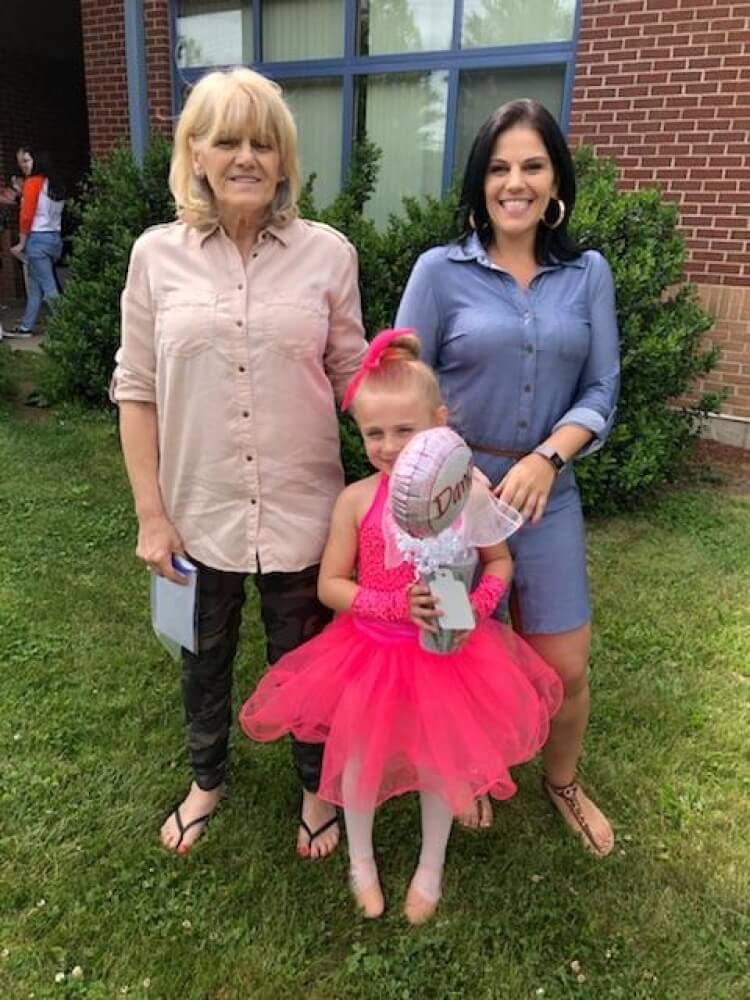Pam Dobay is a warrior. In the last three years, the 67-year-old has dealt with a cancer diagnosis and stem cell transplant before recently contracting the coronavirus.
None of it was easy, but today, Dobay is recovering at home. She says she cannot begin to express the gratitude she feels towards everyone who has cared for her, including her Dana-Farber care team and her family.
“When this is all over, I want to show everyone at Dana-Farber what they did, and thank them for everything,” says Dobay.

A blood disorder diagnosis
In February 2018, Dobay was diagnosed with myelofibrosis, a blood disorder in which the bone marrow is unable to produce healthy red blood cells. Dobay’s primary care physician first worried something wasn’t right after her test results from routine blood work came back abnormal. Myelofibrosis is a precursor condition for leukemia, meaning it puts those who are diagnosed at a much higher chance of developing the disease.
Dobay, who lives in Holbrook, MA, was placed under the care of Corey Cutler, MD, MPH, medical director of the Adult Stem Cell Transplantation Program at Dana-Farber/Brigham and Women’s Cancer Center. Initially, she was given blood transfusions to help her body compensate for the bone marrow’s inability to produce red blood cells. This treatment is not designed to be a permanent fix, despite being highly effective for a short period of time: Eventually, Dobay would need a bone marrow transplant.
In September 2018, just six months after her diagnosis, Dobay underwent a reduced-intensity transplant (sometimes referred to as a mini-transplant). Mini-transplant patients receive lower doses of chemotherapy than are used in a full-intensity transplant, and in general, receive no radiation therapy. The reduced-intensity procedure was developed for older patients and others who often can’t tolerate the harsh side effects of full-intensity treatments.
The procedure still proved to be difficult for Dobay, who ended up in the intensive care unit (ICU) due to complications. This was a possibility her care team had prepared for, and slowly, her condition improved. While she still has some symptoms of chronic graft-versus-host disease (GVHD), she and her family — including Robert Dobay, her husband of 45 years — hoped this would be her toughest test.
Troubling symptoms
In March 2020, Dobay started experiencing fevers, chills, and difficulty breathing — three symptoms of the coronavirus. Dobay’s family called Cutler, who instructed them to immediately bring her to the nearest emergency room. She was initially treated at her local hospital, but after she tested positive for the coronavirus, the family pushed for her to be transported to Brigham and Women’s Hospital.

The team at Dana-Farber encourages anyone who is experiencing symptoms associated with COVID-19 to report them right away. Even if you have a confirmed case of the coronavirus, there are measures in place to ensure you can receive the care that’s safe for you, your care team, and other patients and staff members.
Because Dobay was a former bone marrow transplant recipient and has GVHD, she is immunocompromised and was at an increased risk for developing severe symptoms due to COVID-19. Upon being admitted to the ICU at Brigham and Women’s, her condition worsened, and she needed to be placed on a ventilator.
Due to visitor restrictions, the Dobays were not allowed to visit her in the hospital, so her husband called her care team every day to check in.
Dr. Cutler contacted Francisco Marty, MD, an infectious disease specialist in the Adult Stem Cell Transplantation Center at Dana-Farber/Brigham and Women’s Cancer Center, to discuss Dobay’s care. Marty was the principal investigator of trials testing the antiviral drug remdesivir, and its ability to treat patients with COVID-19 pneumonia. At the time, it was unclear if it would help bone marrow transplant recipients.
Dobay became the first stem cell transplant patient at Brigham and Women’s to receive the drug. A week after starting treatment her lung function improved, and she was able to come off the ventilator. However, other medical complications led to her being placed back on the ventilator and to remain in the intensive care unit for a couple of more weeks. Over time, she was once again taken off the ventilator, and in early May she was finally able to go home.
“We were very happy that the remdesivir trials were open to all patients, including many of our cancer and bone marrow transplant patients at Dana-Farber,” says Marty. “The initial reports from the clinical trials have shown patients who receive remdesivir recover faster from COVID-19 pneumonia. As additional analyses from the trials are performed, we will be able to see more closely how remdesivir helped the cancer patients at Dana-Farber and elsewhere.”
“We were all terrified, but she is just incredibly strong,” Robert Dobay says. “We are so thankful for her care team who helped her get through this.”
Regaining her strength
Dobay says she has regained most of her strength since returning home, and in addition to her physical therapy, she is once again doing squats, weightlifting, and sit-ups. She is also back to going on walks with her daughter and her dog.
“Pam has such a strong will, and her supportive husband was a remarkably large part of her recovery,” says Tricia Severns, ANP-BC, OCN, a nurse practitioner at Dana-Farber and a member of Dobay’s care team. “The entire family is incredibly strong and supportive.”
“I feel really lucky to still be here,” adds Dobay. “I could not have gotten through all of this without my family. We’d do anything for one another.”
